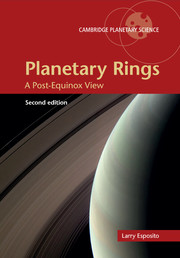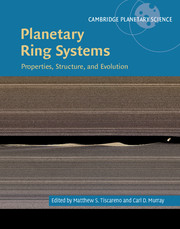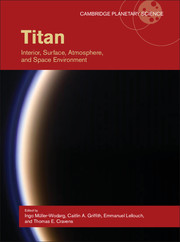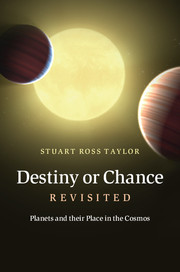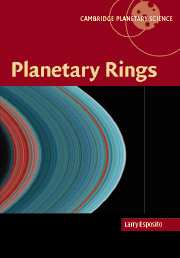Planetary Rings
Fully updated and expanded, this new edition presents a cutting-edge summary of planetary rings, including results from Cassini's Saturn System, Equinox and Solstice missions, and the New Horizons flyby of Jupiter. The book introduces basic physical processes and simple mathematical approaches in an accessible manner, including N-body and stochastic models of ring dynamics. Further revised chapters present highlighted topics including Saturn's F ring, Uranus' rings and moons, Neptune's partial rings, dusty rings, and Jupiter's ring-moon system after Galileo and New Horizons. Cassini results are fully integrated throughout, including new images in color, and a new Afterword links ring images in the Cassini 'Hall of Fame' gallery to the relevant explanation in the text. An online cache of images and videos from NASA's collection makes it easy to locate relevant and beautiful illustrative materials. This is a key resource for students, researchers and professionals in planetary science, astronomy and space-mission research.
- Fully revised, this new edition provides up-to-date results from the Cassini missions to Saturn and the New Horizons flyby of Jupiter
- Spectacular illustrations now include cutting-edge images from Cassini and new images in color
- Supported by a website of superb NASA collection images and videos, providing an easy-to-find resource of the most relevant materials available
Reviews & endorsements
'Supported by an online collection of beautiful NASA images, this is a critical resource for anyone interested in planetary sciences.' Choice
Product details
March 2014Hardback
9781107028821
258 pages
252 × 180 × 16 mm
0.72kg
90 b/w illus. 25 colour illus. 3 tables
Available
Table of Contents
- Preface: a personal view of planetary rings
- 1. Introduction: the allure of the ringed planets
- 2. Studies of planetary rings 1610–2013
- 3. Diversity of planetary rings
- 4. Individual ring particles and their collisions
- 5. Large-scale ring evolution
- 6. Moons confine and sculpt rings
- 7. Explaining ring phenomena
- 8. N-body simulations
- 9. Stochastic models
- 10. Age and evolution of rings
- 11. Saturn's mysterious F ring
- 12. Uranus' rings and moons
- 13. Neptune's partial rings
- 14. Jupiter's ring-moon system after Galileo and New Horizons
- 15. Ring photometry
- 16. Dusty rings
- 17. Concluding remarks
- Afterword
- Glossary
- References
- Index.

